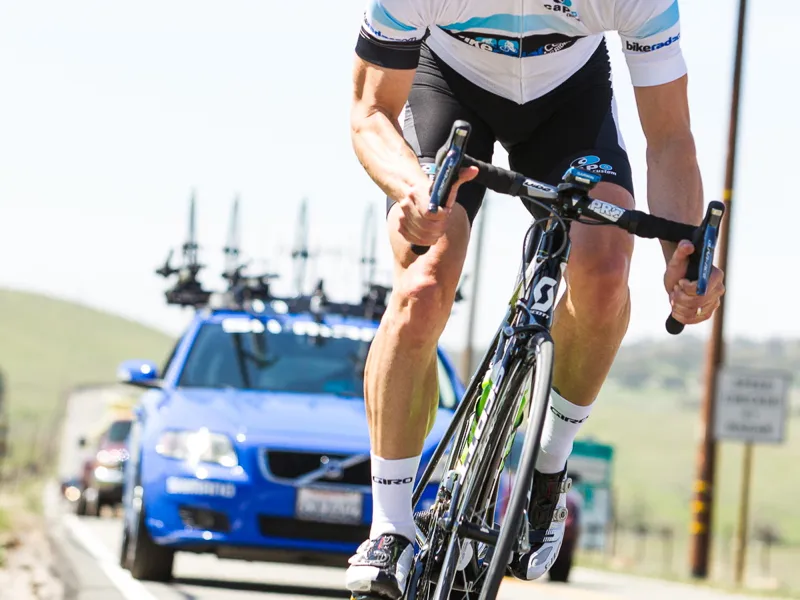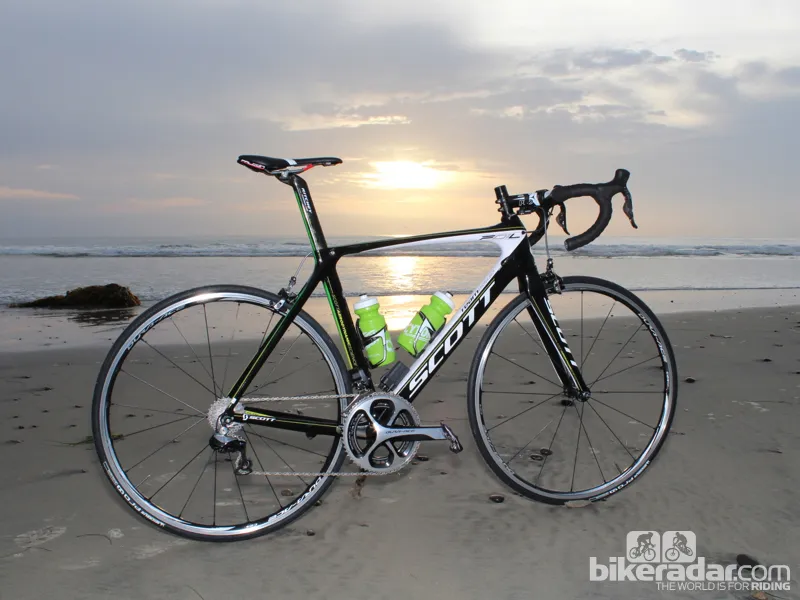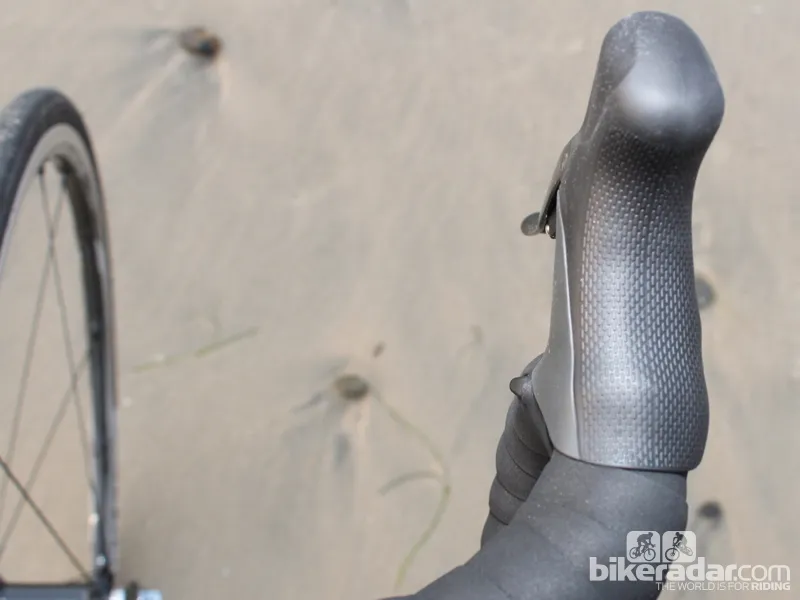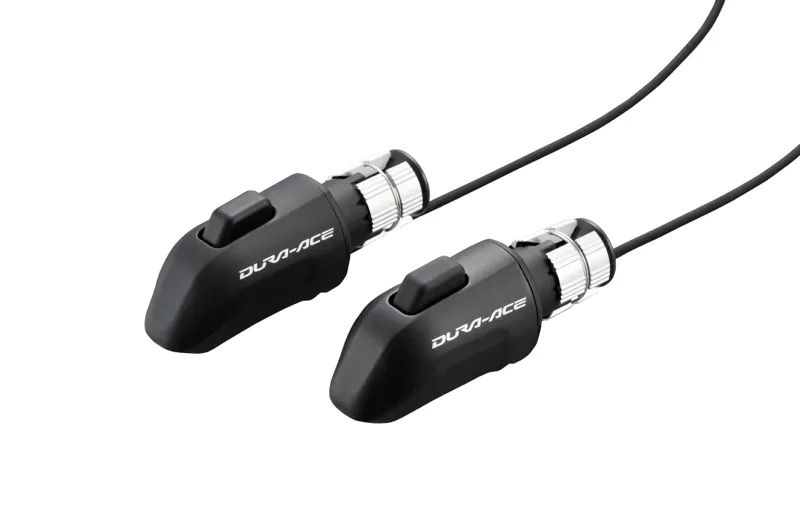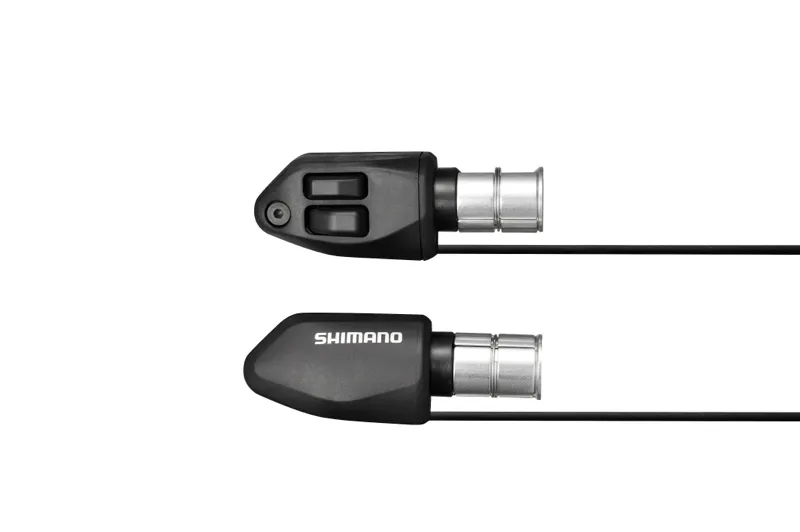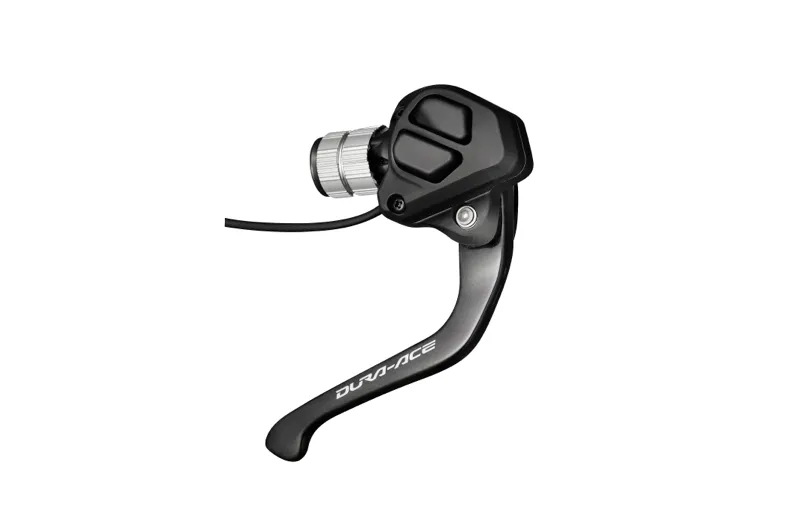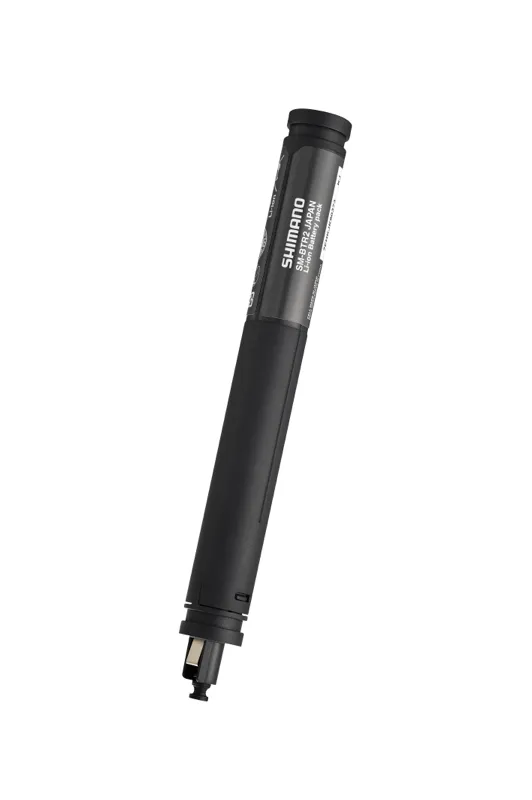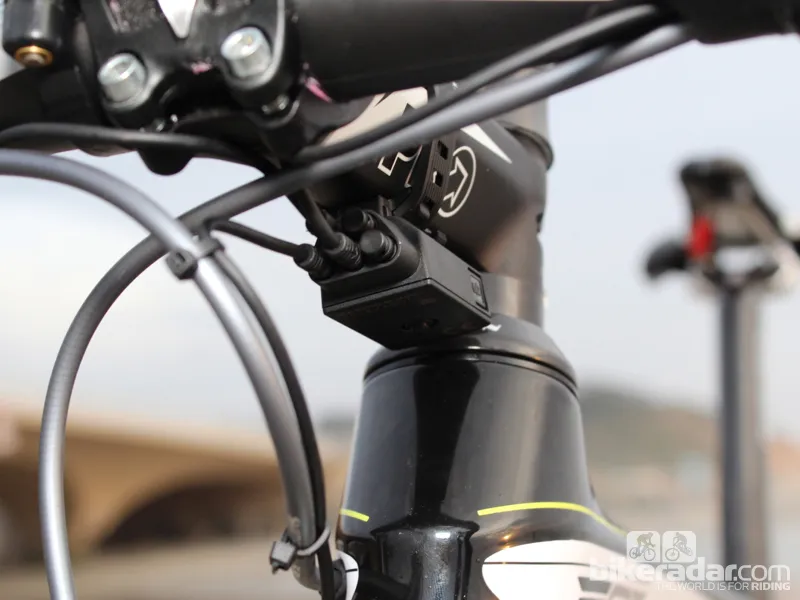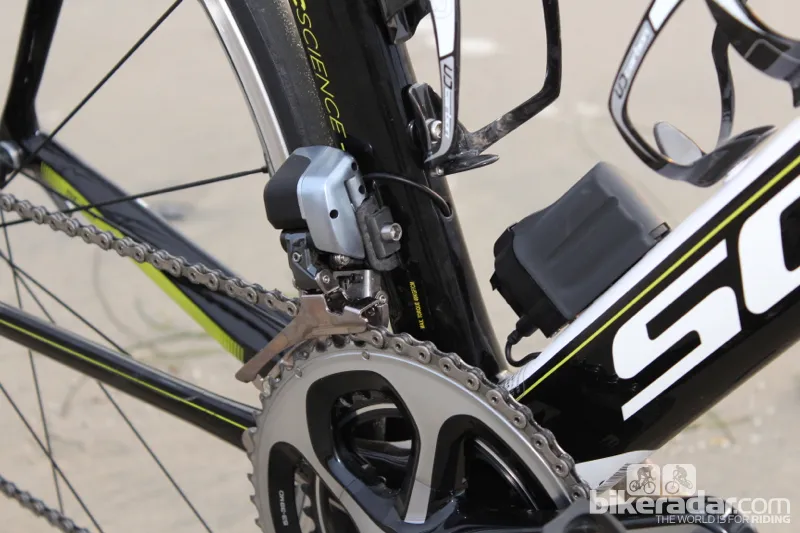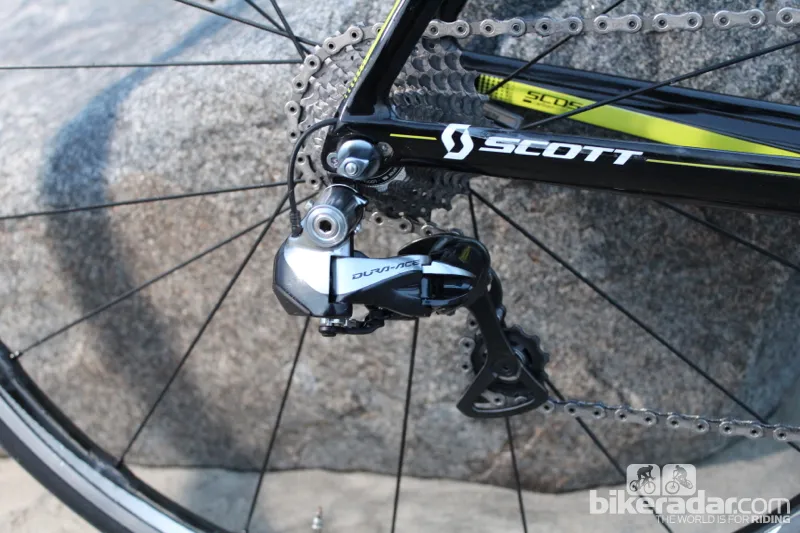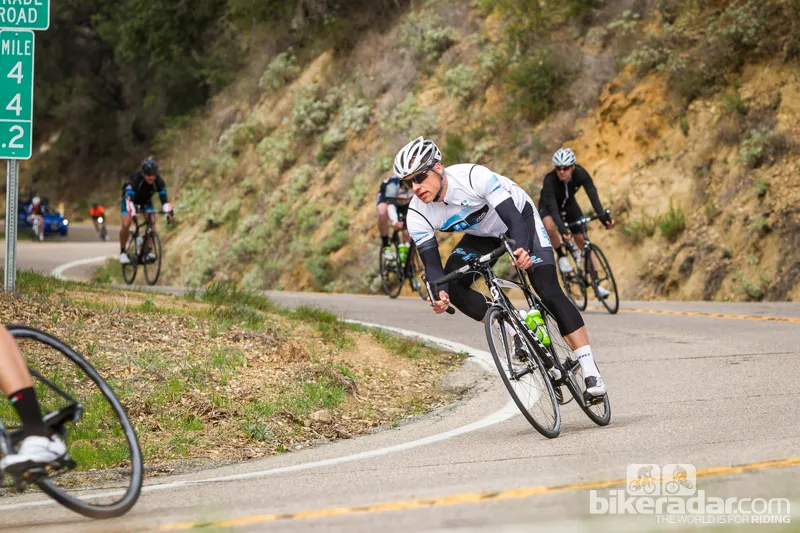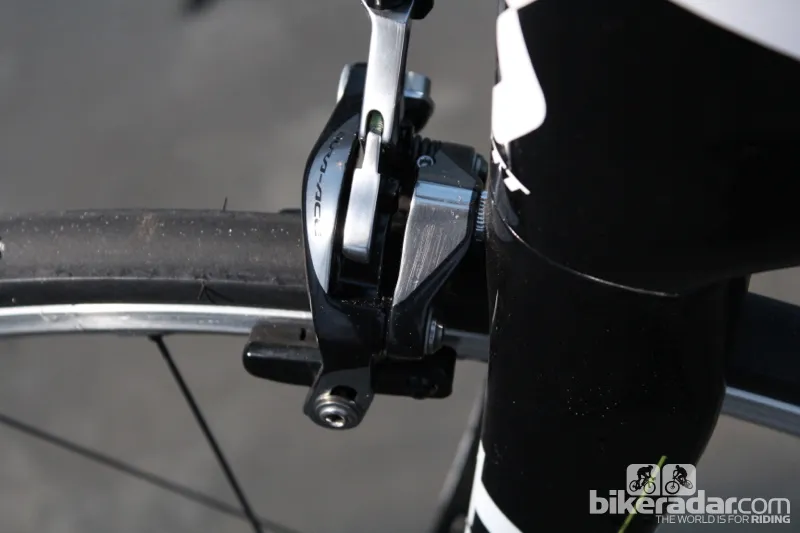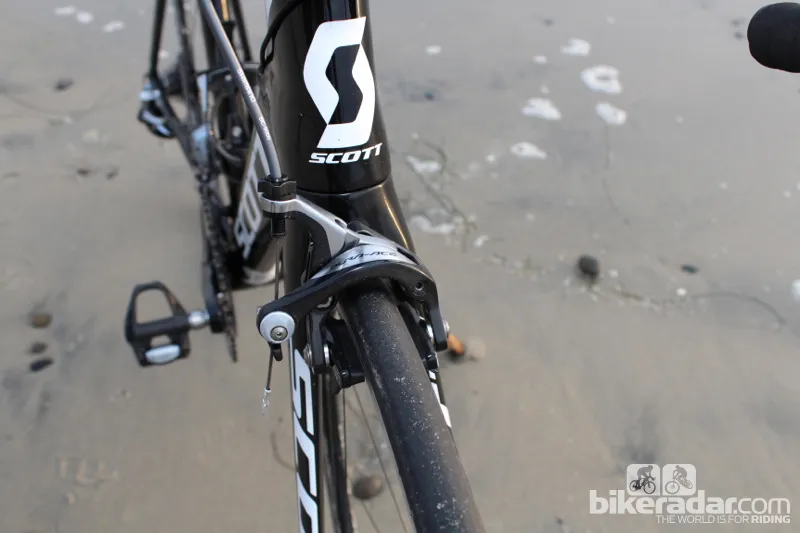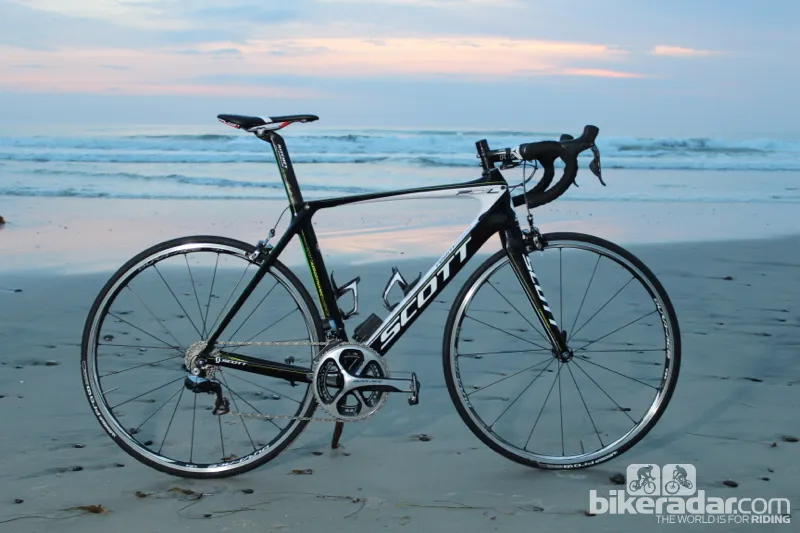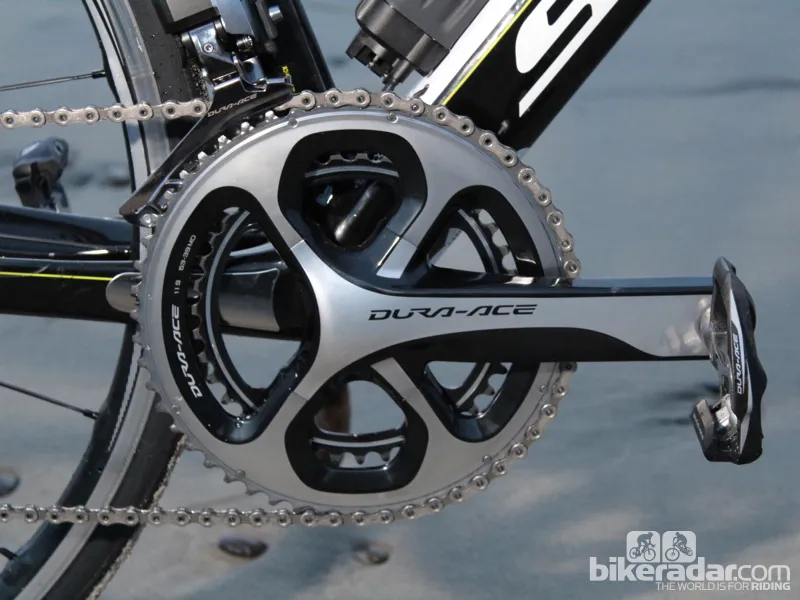Want to shift 10 gears with the push of a button, with your hands on the tops of the bars, wrapped around the drops or at the end of clip-on extensions? With the new Dura-Ace Di2 9070 you can do that – plus shift with the buttons on the actual levers, of course.
- Pros: Fast, flawless shifting; four satellite shifter options; programmable shift speed and configurations; excellent braking power and modulation
- Cons: Software required to program system is PC only; not entirely backwards compatible; faint tactile sensation when shifting
- Bottom line: A luxury group that underscores the limitations of mechanical systems, adding a plethora of shifting options, from button location to shifting under full power
First announced last year, Shimano’s latest electronic groupset, Dura-Ace Di2 9070 is now showing up on bikes. BikeRadar tested the 11-speed modular group on a Scott Foil outside of San Diego, California.
Shimano di2 9070 11-speed on cancellara's trek domane
Video: Shimano Di2 Dura-Ace 9070 11 speed on Fabian Cancellara's Trek Domane
In addition to the multiple satellite shifter options, you can hold down a button for multiple shifts – a feature not available on the first 7970version of Di2 – and even set the speed for those multi-shifts between one of five settings.
Finally, you can program which button does what. Want your left shifter to control the rear derailleur? No problem. For time trial and triathlon bikes, remote shift options include two buttons on each pod, or, if you don’t think you’ll take it out of the big ring much, one button for upshifting the rear on the left and one button for downshifting on the right. Or vice versa – they’re just buttons.
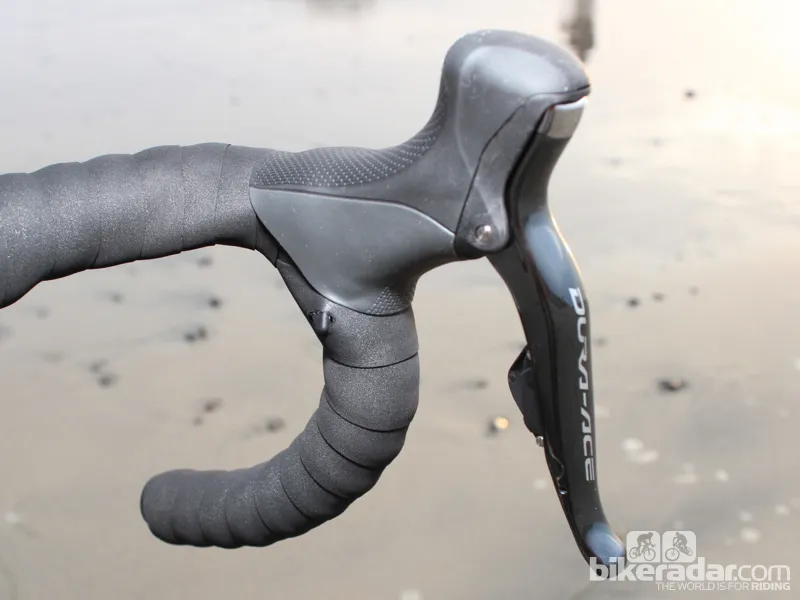
The tiny sprint shifter can be set to control either derailleur
Shimano has new software that allows riders to program all of this at home, if you are a PC owner. If you're a Mac user – sorry, Charlie – you’ll have to take it to a shop. However, you can still trim the derailleurs without software, in the case of a wheel change with different spacing.
The luxury groupset shares a crankset, chain and brakes with the 9000 11-speed mechanical group but weighs 24g less. Total group weight is 2,047g, compared to 2,219g for the previous Dura-Ace Di2.
The 9070 derailleurs get a visual overhaul from the 7970 ones, with some slight weight savings, and the rear now accepts up to a 28T cassette.
The big weight savings compared to 7970 comes from the internal battery, with its minimal mounting hardware compared to the external battery. There's still an external battery option for 9070, such as the one on our test Foil.
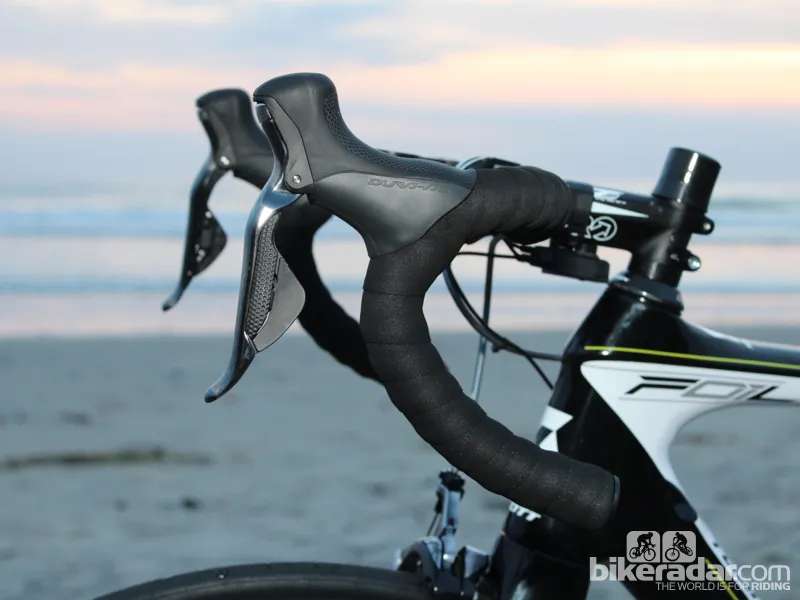
Multiple shifts with the hold of a button are also programmable
Shimano addressed one complaint about the 7970's vague button feel with a more defined, audible click for each shift. Still, the button press is a light sensation, much softer than the definitive snap of Campagnolo’s electronic EPS system.
Ports – ports everywhere
Shimano wasn't the first with a electronic group, of course. “Back in the 90s, Mavic had the vision to see that we’re going to need electronics on the bike,” said Shimano vice president Wayne Stetina, referring to the ahead-of-its-time Mavic Mektronic electronic group that never took root. “So why not put it all over the bike?”
The original Dura-Ace Di2 group didn't allow for shifters all over the bike (nor does Campy's current EPS). It had two ports on the shifters (one of which went back to the main system) and no junction box. It was a closed, wired system.
Now, 9070 is more modular. It has three ports at each shifter (one to plug into the main system, one for a sprint shifter and one for another accessory). Plus, you can get additional ports under the stem.
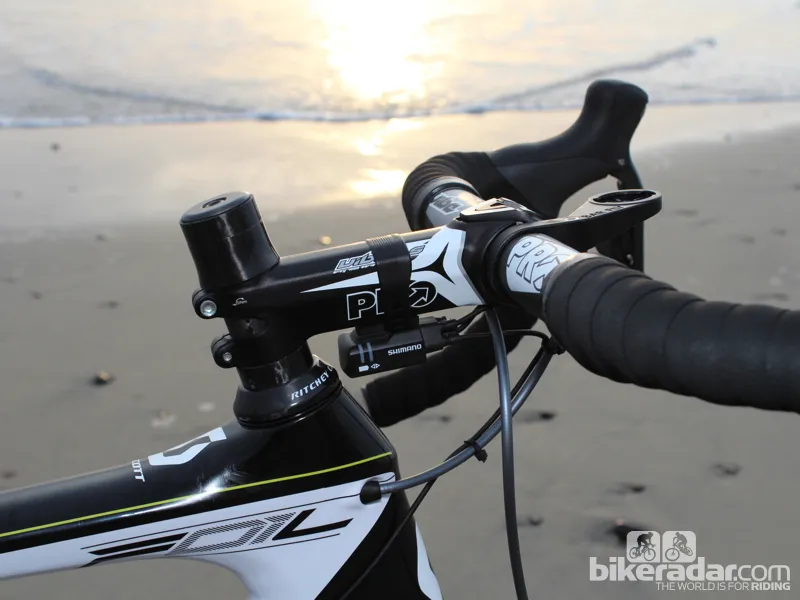
The junction box under the stem is plug-and-play for STI levers and optional extension shifters
The optional shifters include:
- Sprint shifters: Small knobs that shift one direction; one configuration is one on the right drop and one on the left, controlling the down- and upshifting of the rear derailleur; these can only be plugged into the STI shifters, not the junction box
- Climbing shifter: A two-button pod that shifts two directions; a common placement is under the handlebar near the stem, so you can shift with the thumb
- TT/tri extension shifters: Two-button pods, one for each extension
- Minimalist TT/tri extension shifter: Similar to sprint shifters, with one-way shift on each side; good for those who mostly race in the big ring
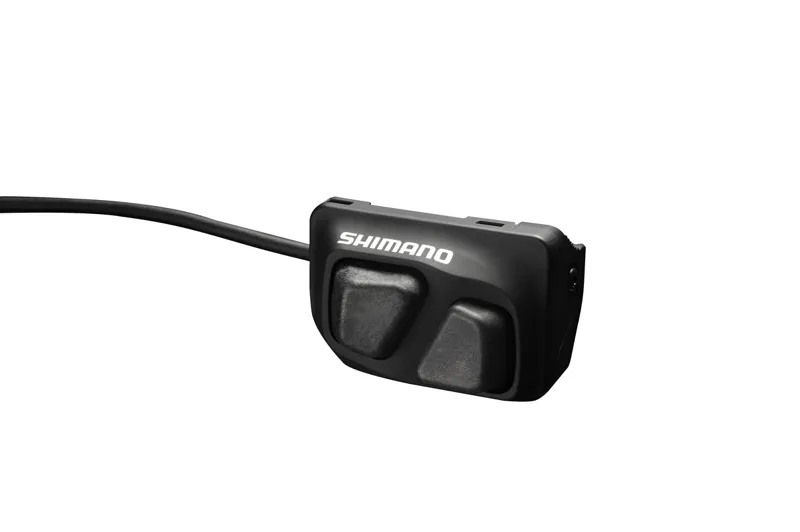
The two-direction climbing switch is one of four extension options
Also, there's an aero version of the Di2 STI levers for time trial and triathlon.
Shifting speed, audio/tactile feedback, convenience and performance
One of the most pleasantly surprising things about Di2 is how the motorized derailleurs shift up to a bigger cog or ring when you're out of the saddle. On a mechanical group, you have to back off just a touch. In fact, the all-round experience is akin to an automatic transmission car – you can keep the pedal down continuously, regardless of what gear shifts are taking place.
One complaint against Di2 has been the vague feel of the buttons, which, combined with the close proximity of the buttons, can make shifting in thick gloves a bit comical – without a moving lever to feel in your hands, there was a loss of connectivity. Our one test ride was on a warm day, so we can't say whether or not the subtle shape refinements improve this at all, but the buttons are still side by side.
With bare fingertips, however, you can clearly feel the difference between the smooth, concave, inner button and the dimpled, convex one. You can definitely feel the short throw (>1cm) and a click with each shift. There were no mis-shifts.
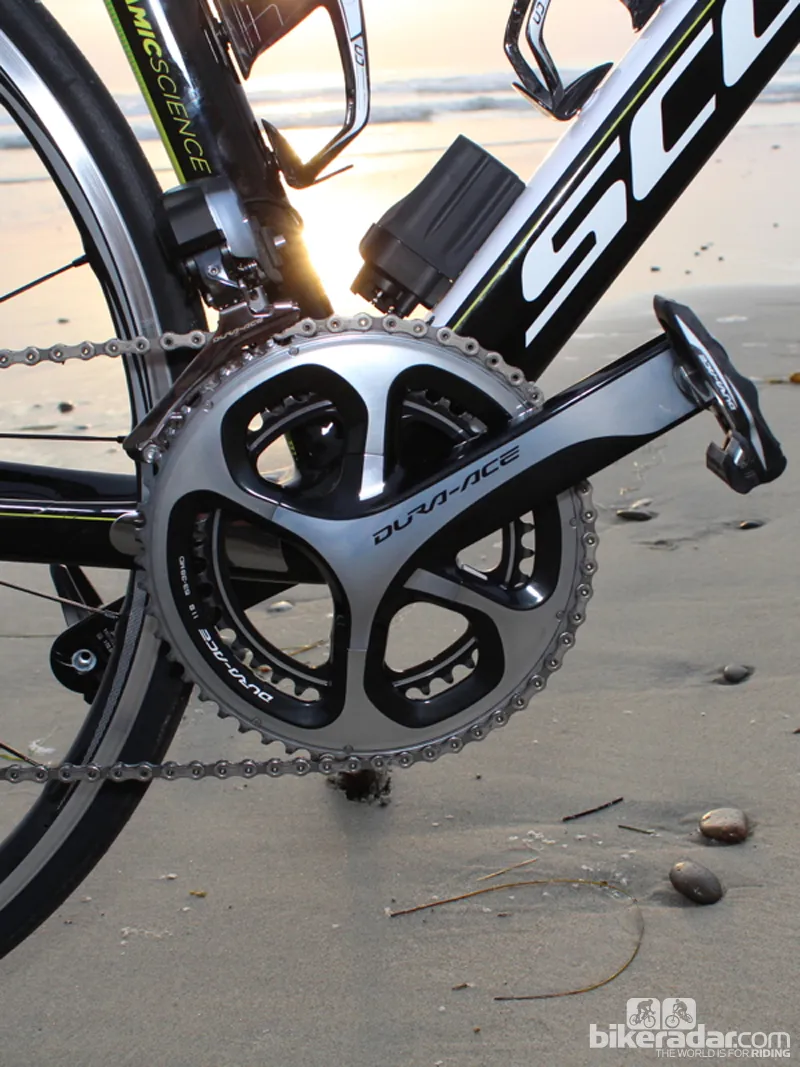
9070 shares a crank, chain and brake calipers with the new 9000 mechanical group
The new multi-shift function, previously an advantage for Campagnolo, is cool. Yes, you can just rapid-fire shift manually on electric and mechanical groups, but this option is easier.
Set on 'infinite', you can just hold the rear downshift button down as the derailleur glides across the cassette until the gear feels right, then take your finger off. Whether you choose very slow, slow, normal, fast or very fast in the multi-shift menu – on your PC, remember – this setting applies to all your extension shifters as well.
We rode with the sprint shifters placed just below the hoods, one on the inside of each drop. Using the right thumb to downshift the rear derailleur felt natural, a la Campagnolo, although the button is much easier to reach from the drops.
We're eager to further test different placements of this tiny one-way shifter, including up on the top of the bar. Using the left thumb to upshift the rear derailleur wasn't quite so natural at first – hey, old dog, new tricks here – but by the last half of a three-hour ride we were using it all the time. We found it very comfortable, convenient and honestly just fun to shift up and down the rear derailleur with both hands in the drops.
We haven't tested the climber switch yet, but a few fellow riders said they appreciated being able to shift with their hands on the tops. One thing we definitely noticed – and appreciated – was that, when going hard, little things make a difference. Whether that difference is a true physical benefit or just a psychological one, minimizing what your hands are doing to shift when you're hurting is a beautiful thing.
Speaking of little things, we appreciated having an eleventh cog, not for an 'extra' gear so much as for smaller steps between the entire range. When suffering on the wheel of a better man, small gear changes – made with minimal hand movement – took a bit of the edge off.
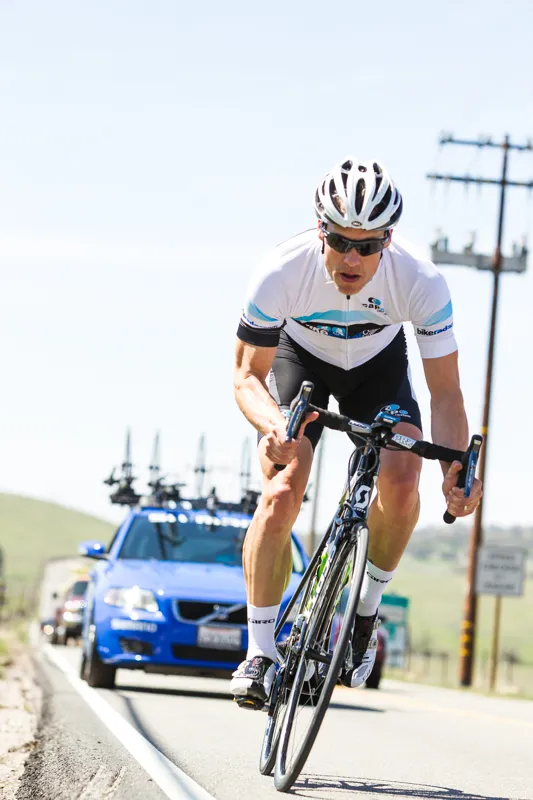
We could easily upshift with our left thumb and downshift with our right under full power
Shared with 9000 – brakes, crank, chain
As we've said, we test rode the system on a Scott Foil and Shimano's new C24 clinchers (with aluminum brake tracks) down a tight and winding descent that dropped 4,000 vertical feet in 10 miles. Braking power, modulation and lever feel were excellent.
After descending on more squealing carbon wheels than we care to remember, Shimano's mighty new dual-pivot calipers pushing on a metal brake surface was a relief. We could brake hard and late into corners, and easily feather the brakes as needed.
The new four-arm crank remains metal. While all its competitors have gone carbon at the top end of their ranges, the Japanese giant is staying the course with aluminum? Why? Fatigue strength, says Stetina. Shimano has incredibly strict fatigue tolerances, and until the company can produce a carbon crank that's lighter, stiffer and has the same fatigue life as its aluminum cranks, it will proceed with metal.
Material choice aside, we love the new smaller bolt-diameter design, which eliminates the 'standard or compact' question. With this set you can run 53/39, 50/34 or, our favorite setup for riding in the mountains, the 52/36. Well played, Shimano.
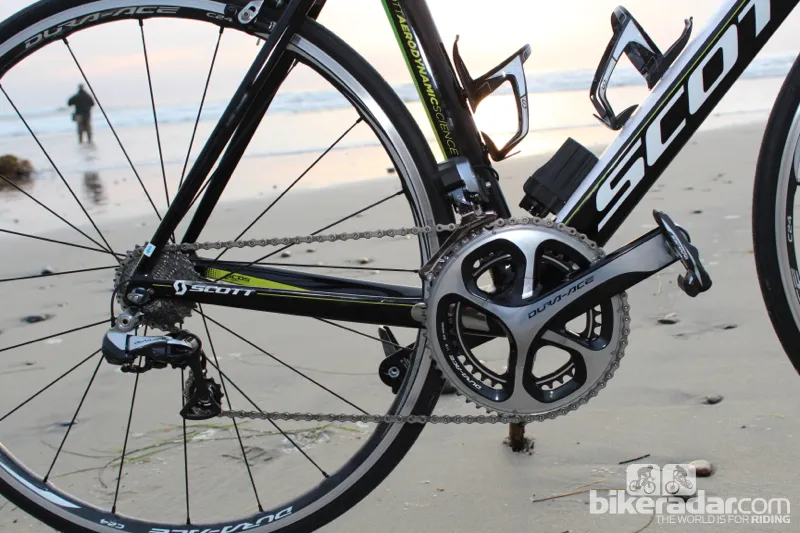
The new crank eliminates the 'standard or compact' question with a smaller bolt diameter
What’s missing?
On the whole this new group is phenomenal, but there are still a few things missing from what could be the ultimate road group. There's no power meter, for one. While SRAM jumped that train with the purchase of Quarq, Shimano doesn't make a power meter. You can, of course, use an SRM or a Stages Power, but why not integrate one of these into the group itself?
Also, the ANT+ Flight Deck computer announced last year isn't a reality in this group. Yes, you can use a Garmin or something similar, and pair it with a third-party power meter, but why not put all this together in a computer that's also talking with the electronic group?
Finally, as we type this review on a Mac, we have to point out that the PC-only configuration software is limiting. We'd like to see an app for iPhone and Android that works with 9070.
At the end of the day, though, 9070 represents a huge step forward in the man-machine interface. If you don't intend to purchase it, you probably don't want to test ride it – it's quite addictive.
For more information on Shimano products see www.shimano.com.

